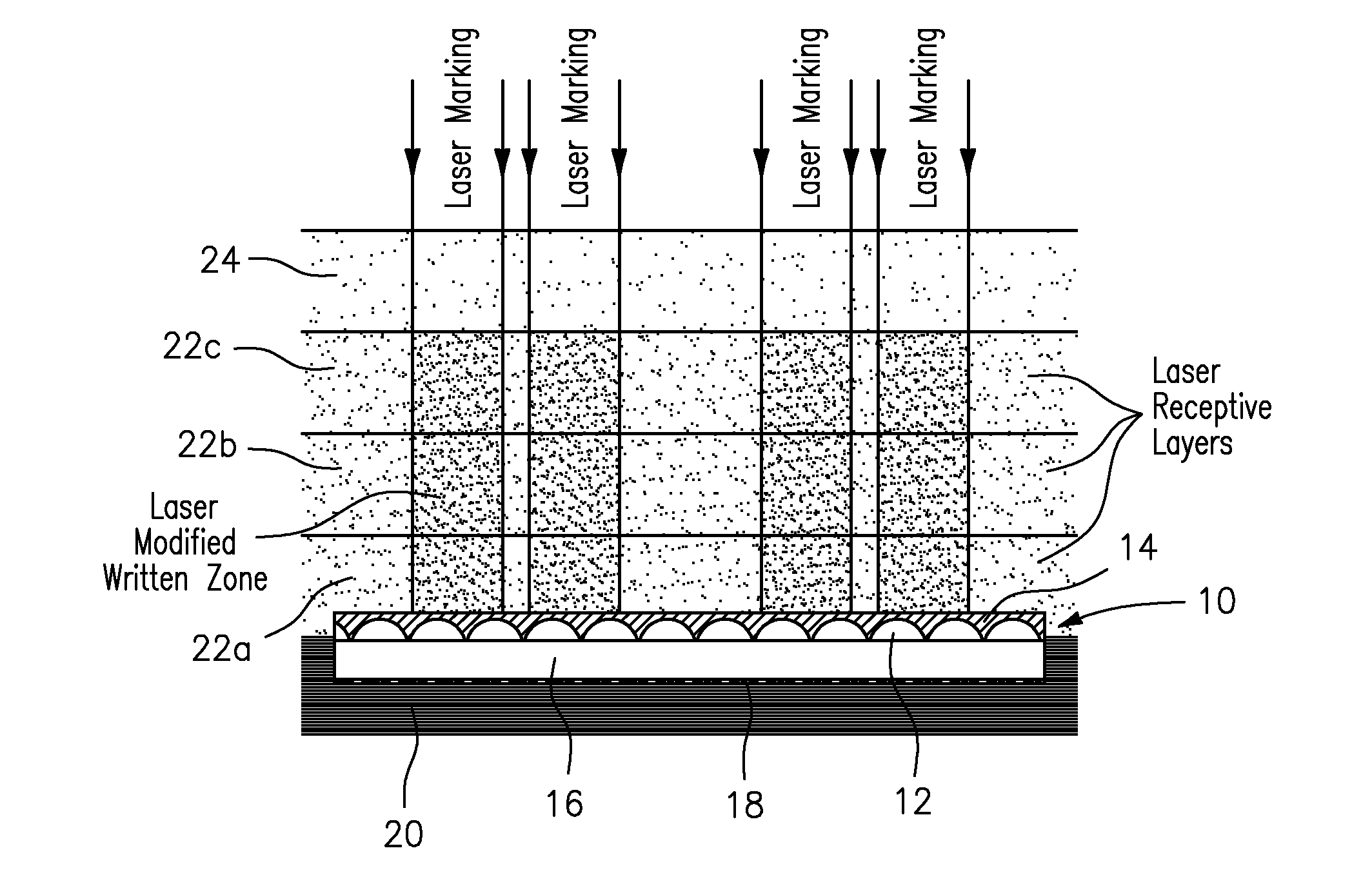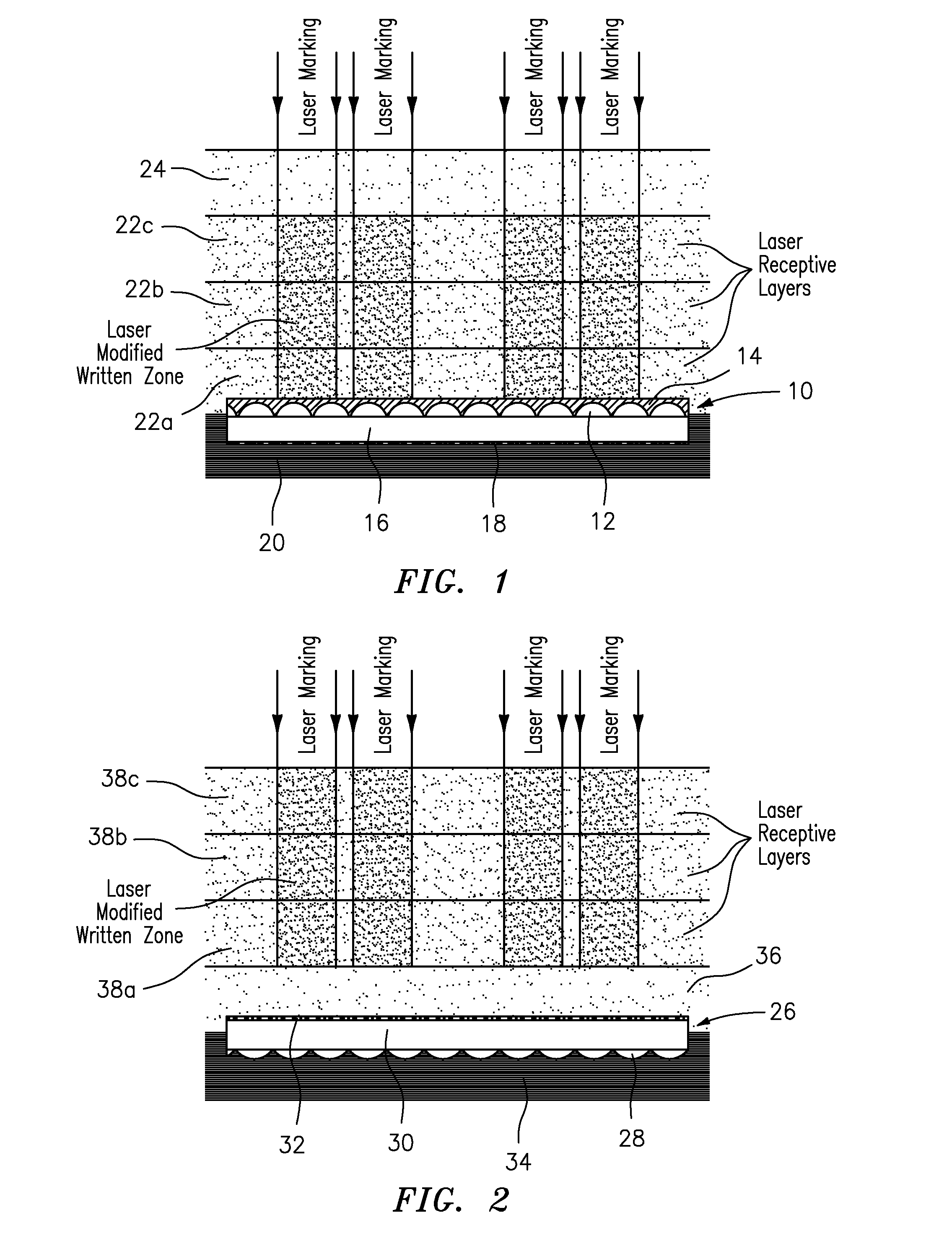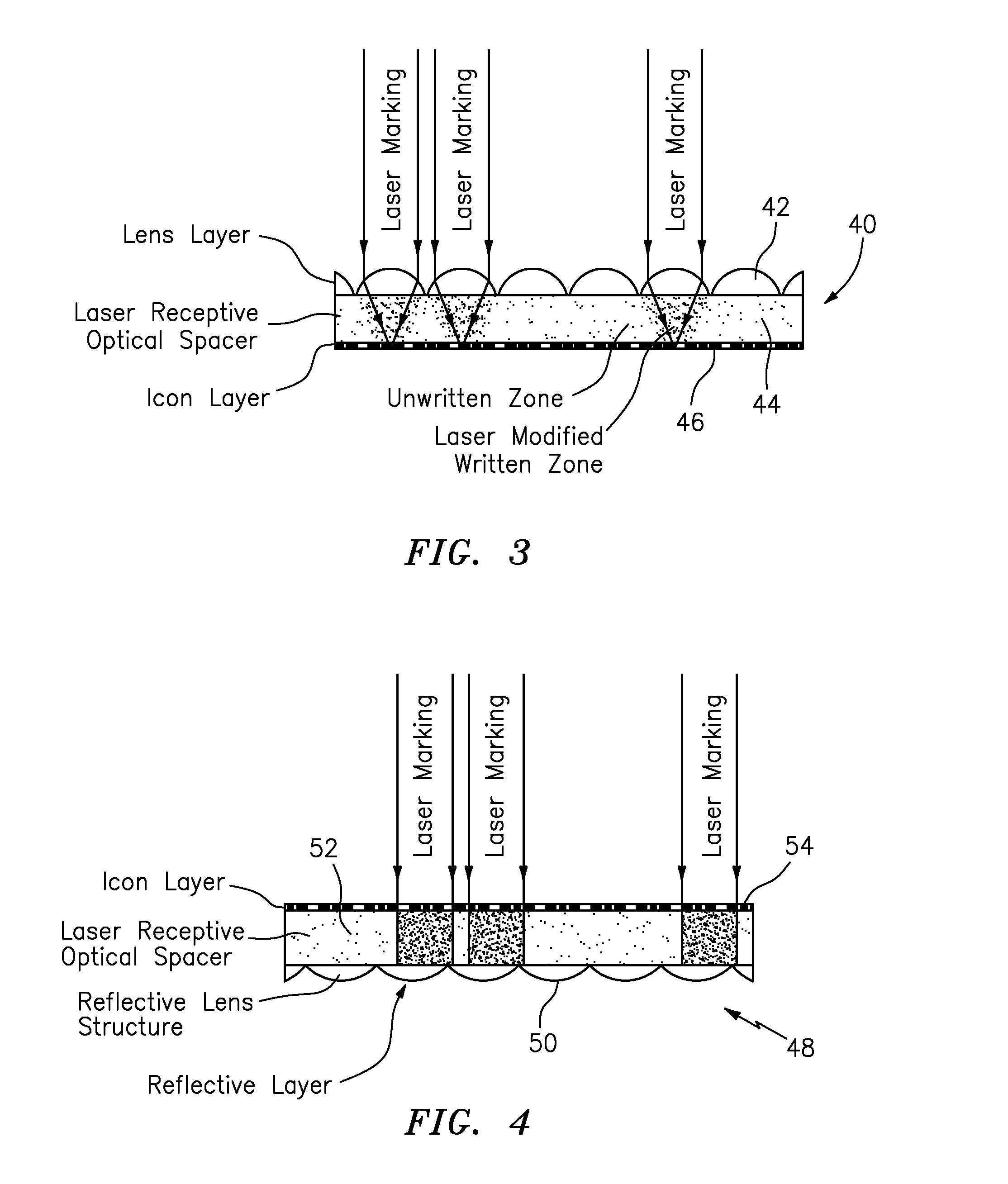Laser marked device
a laser marking and laser technology, applied in the field of laser marking devices, can solve the problems of inability to be put into practice, inability to present synthetic images, and inability to contain micro-optic systems capable of laser marking micro-optic film materials, etc., to achieve the effect of enhancing the security features of these documents and increasing the complexity
- Summary
- Abstract
- Description
- Claims
- Application Information
AI Technical Summary
Benefits of technology
Problems solved by technology
Method used
Image
Examples
example 1
[0071]In this example, which is shown in FIG. 1, an optical film material 10 containing refractive lenses 12 encapsulated below a layer of a thermoset polymer 14, an optical spacer 16, and image icons 18 was prepared and then embedded between a 150 micron thick base layer 20 prepared using an opaque white polycarbonate film from SABIC with the product designation Lexan SD8B24 film, and a multi-layer construction made up of three laser markable layers 22a, 22b, 22c of 150 micron thick laser markable transparent polycarbonate film from SABIC with the product designation Lexan SD8B94 film, and a 150 micron thick outerlayer 24 prepared using a clear polycarbonate film from SABIC with the product designation Lexan SD8B14 film.
[0072]An image was then marked in the laser markable transparent polycarbonate film layers 22a, 22b, 22c using a V-Lase 10 Watt Q-switched 1064 nm laser marking system, which produced laser light emission at 30,000 Hz with a power setting of 80%, and scan speed of 2...
example 2
[0073]In this example, which is shown in FIG. 2, an optical film material 26 containing metalized reflective lenses 28, an optical spacer 30, and image icons 32 was prepared and then embedded between a 150 micron thick Lexan SD8B24 opaque white polycarbonate film base layer 34, and a multi-layer construction made up of a 150 micron thick Lexan SD8B14 clear polycarbonate innerlayer 36, and three 150 micron thick Lexan SD8B94 laser markable transparent polycarbonate film overlayers 38a, 38b, 38c.
[0074]An image was then marked in the laser markable transparent polycarbonate film layers 38a, 38b, 38c using the same laser marking system and settings as set forth above in Example 1. The resulting material or device again contained the laser marked image with no detectable damage to the optical film material or internal interfaces.
example 3
[0075]In this example, which is shown in FIG. 3, an optical film material 40 containing refractive lenses 42, a laser markable optical spacer 44, and image icons 46 was prepared. The laser markable optical spacer 44 was a 50 micron thick, clear polycarbonate sheet from 3M, 3M Center, St. Paul, Minn. 55144-100 (“3M”) under the product designation Clear LE clear polycarbonate film. An array of refractive lenses 42 with a 58 micron focal length were formed on an uppermost surface of the optical spacer 44, and a 3 micron thick arrangement or layer of pigmented image icons 46 was formed on the lowermost surface of the optical spacer 44. The prepared micro-optic film material projected synthetically magnified images with sharp focus.
[0076]An image was marked in the optical spacer 44 using the same laser marking system and settings as set forth above in Example 1. The resulting material or device contained the laser marked image with no detectable damage to the refractive lenses 42. In thi...
PUM
| Property | Measurement | Unit |
|---|---|---|
| thickness | aaaaa | aaaaa |
| thicknesses | aaaaa | aaaaa |
| thicknesses | aaaaa | aaaaa |
Abstract
Description
Claims
Application Information
 Login to View More
Login to View More - R&D
- Intellectual Property
- Life Sciences
- Materials
- Tech Scout
- Unparalleled Data Quality
- Higher Quality Content
- 60% Fewer Hallucinations
Browse by: Latest US Patents, China's latest patents, Technical Efficacy Thesaurus, Application Domain, Technology Topic, Popular Technical Reports.
© 2025 PatSnap. All rights reserved.Legal|Privacy policy|Modern Slavery Act Transparency Statement|Sitemap|About US| Contact US: help@patsnap.com



